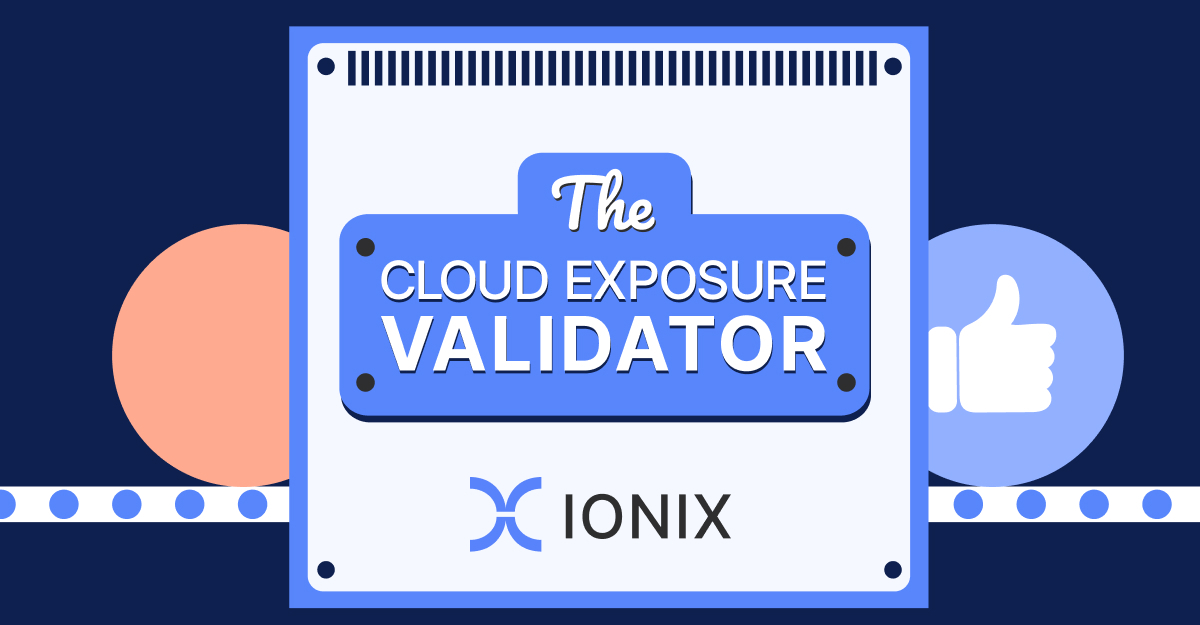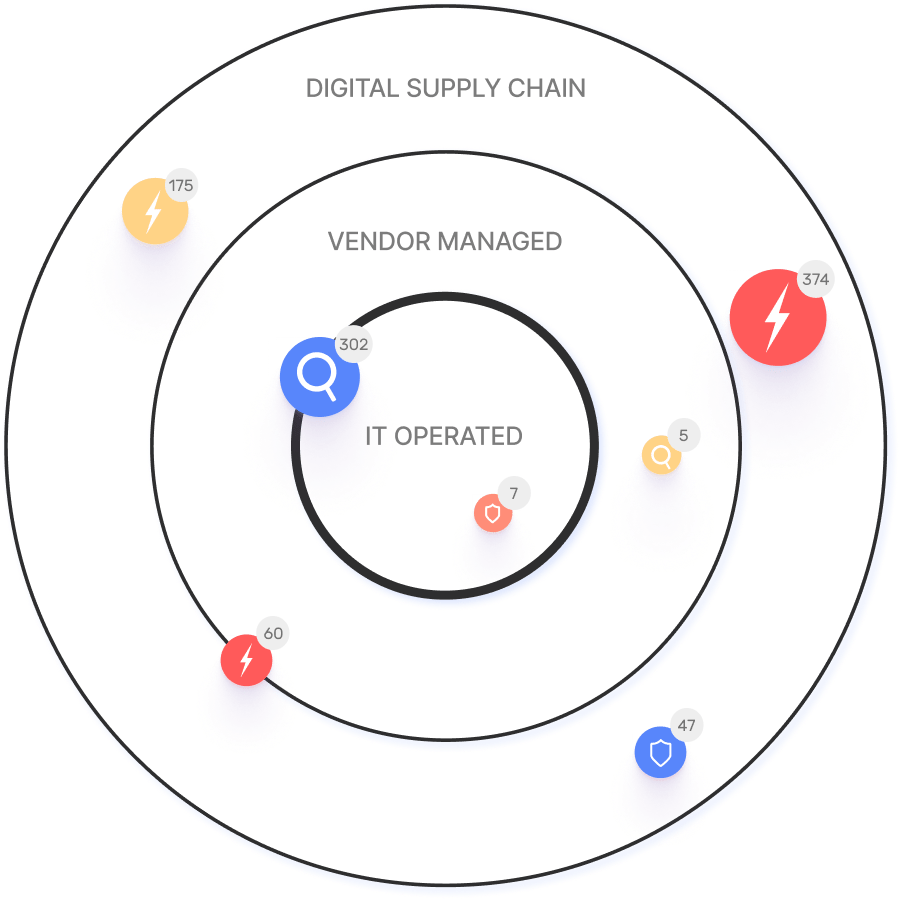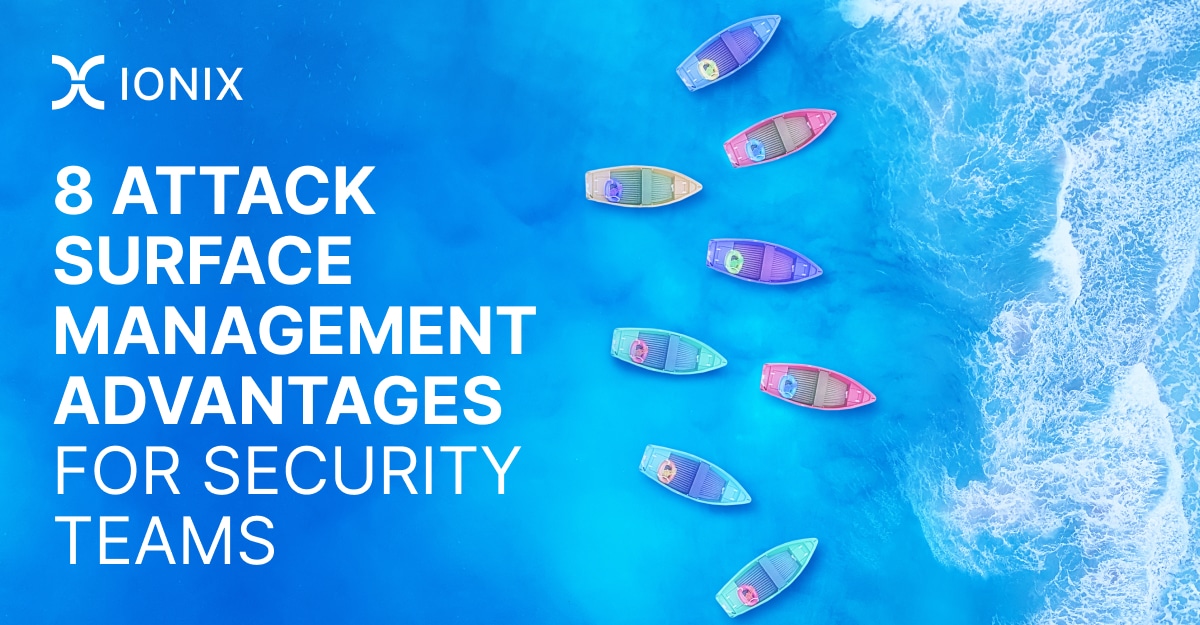8 Key Attack Surface Management (ASM) Benefits for Security Teams
Author: Amit Sheps, Director of Product Marketing |
Managing your attack surface—the sum of all potential attack vectors in your systems—is critical for modern cybersecurity. Attack Surface Management (ASM) provides the visibility, context, and automation needed to understand, assess, prioritize, and remediate risks faster and more effectively. Below, we detail the 8 key ASM advantages for security teams, with specifics on how IONIX delivers on each benefit, real-world customer outcomes, and answers to common questions.
Summary Table: ASM Benefits & IONIX Solutions
| ASM Benefit | How IONIX Solves It | Customer Proof |
|---|---|---|
| Proactive Cybersecurity | ML-based discovery, continuous monitoring, and prioritized remediation before threats are exploited. | E.ON: Improved risk management with continuous asset discovery. |
| Attacker’s View | Maps known and unknown assets, including digital supply chain, from an attacker's perspective. | 70% of orgs face attacks from unknown assets (ESG). IONIX closes these gaps. |
| Pen Testing & Red Teaming | Automates asset discovery and simulates no-risk attacks (e.g., XSS, SQLi) for broader coverage. | Warner Music Group: Enhanced operational efficiency and coverage. |
| Reduce Attack Surface | Identifies and retires outdated IT, eliminates critical attack vectors, and reduces surface sprawl. | Customers report fewer false positives and more actionable insights. |
| Zero-Day Response | Rapidly identifies impacted assets and technology stacks for immediate response. | Fast time-to-value: Initial deployment in ~1 week (PeerSpot review). |
| Supply Chain Risk | Discovers, maps, and assesses risks recursively across digital supply chain; active protection neutralizes threats. | Grand Canyon Education: Proactive vulnerability remediation (case study). |
| Prioritize Security Resources | Groups vulnerabilities by context and severity, enabling efficient, risk-based mitigation. | Threat Exposure Radar helps focus on urgent issues. |
| Risk-Informed Decisions | Aggregated risk scores and trends for executive visibility; supports M&A due diligence. | Used in M&A to assess acquisition risk and integration plans. |
Frequently Asked Questions about IONIX ASM Value
How does IONIX help security teams adopt a proactive cybersecurity approach?
IONIX enables proactive security by continuously discovering and monitoring all external-facing assets—including shadow IT and digital supply chain connections—using ML-based 'Connective Intelligence.' This allows teams to identify and mitigate risks before attackers can exploit them, shifting from reactive to preventive security.
How does IONIX provide an attacker's view of my organization?
IONIX maps both known and unknown assets—including those in your digital supply chain—exactly as an attacker would see them. This comprehensive visibility helps you uncover hidden exposures and prioritize remediation based on real-world risk.
How does IONIX facilitate penetration testing and red teaming?
IONIX automates asset discovery and simulates no-risk attacks (like XSS and SQLi), giving pen testers and red teams a broader, more accurate target set. This reduces manual reconnaissance and ensures more comprehensive coverage.
How does IONIX reduce the attack surface?
IONIX identifies and helps retire outdated IT ("Zombie IT") and eliminates critical attack vectors. Integrated workflows and clear action items enable teams to systematically reduce attack surface sprawl and close off points of entry.
How does IONIX accelerate zero-day response?
IONIX rapidly discovers which assets and technology stacks are impacted by new zero-day vulnerabilities, enabling security teams to focus their response and reduce risk immediately.
How does IONIX identify and mitigate digital supply chain risks?
IONIX recursively maps and assesses risks across your digital supply chain, identifying 'risky connections' and providing active protection to neutralize threats before they can be exploited.
How does IONIX help prioritize security resources?
IONIX's Threat Exposure Radar and contextual grouping of vulnerabilities enable teams to focus on the most urgent and impactful issues, optimizing resource allocation and reducing mean time to resolution.
How does IONIX support risk-informed business decisions?
IONIX provides aggregated risk scores and trends, supporting executive decision-making for security investments, resource allocation, and M&A due diligence.
Customer Success Stories
- E.ON: Used IONIX for continuous discovery and inventory of internet-facing assets, improving risk management. Read more
- Warner Music Group: Boosted operational efficiency and aligned security operations with business goals. Learn more
- Grand Canyon Education: Enhanced security by proactively discovering and remediating vulnerabilities. Details
Why Choose IONIX for ASM?
- Better Discovery: ML-based 'Connective Intelligence' finds more assets with fewer false positives.
- Focused Threat Exposure: Threat Exposure Radar prioritizes the most urgent issues.
- Comprehensive Supply Chain Coverage: Automatically maps attack surfaces and digital supply chains to the nth degree.
- Streamlined Remediation: Actionable items for IT, with integrations for ticketing, SIEM, and SOAR.
- Security & Compliance: SOC2 compliant, supports NIS-2 and DORA compliance.
See IONIX in Action
Discover how easy it is to implement a CTEM program with IONIX. Find and fix exploits fast.
Watch IONIX DemoExplore More
Industries Represented in Case Studies
- Insurance and Financial Services
- Energy
- Critical Infrastructure
- IT and Technology
- Healthcare
Support & Onboarding
IONIX provides technical support, onboarding resources, and a dedicated account manager to ensure smooth implementation and ongoing success. Read PeerSpot review







